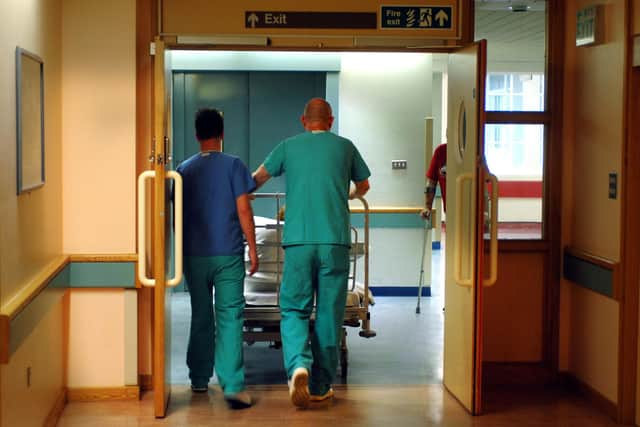NHS: Which hospitals have RAAC concrete? What it is and full list of sites
and live on Freeview channel 276
The NHS has vowed to "eradicate" hospitals containing controversial - and collapsing - concrete.
After a concrete beam collapsed at Kingsdown School in Sussex, a warning was issued to schools up and down the country about the lightweight concrete, and the dangers it could present. Now, a number of schools are contemplating staying closed while the risks to their own buildings are evaluated.
Advertisement
Hide AdAdvertisement
Hide AdReinforced autoclaved aerated concrete (RACC) is a lightweight but reinforced concrete that contains air bubbles. It was largely used in UK construction around the 1950s and 60s.


However, the NHS appears to be years ahead of the schools, having already replaced some of the buildings that contained RAAC and planning to "eradicate" the others.
A spokesman for the Department of Health said: "The NHS has a mitigation plan in place for hospital buildings with confirmed RAAC, backed with significant additional funding of £698m from 2021 to 2025, for trusts to put in place necessary remediation and failsafe measures.
"We remain committed to eradicating RAAC from the NHS estate entirely by 2035.
Advertisement
Hide AdAdvertisement
Hide Ad"The technical advice received from the NHS is that the current approach to monitoring and mitigation remains appropriate.”
Currently, there are seven hospitals that were either partially or completely constructed using RAAC. Two have been replaced already and the other five are in the works, as part of the government's new hospitals programme.
Sir Julian Hartley, chief executive of NHS Providers, said the organisation “welcomed” recent government action, but called for all trusts to have access to cash to replace RAAC where necessary.
“We welcomed recent government action to replace dangerous, crumbling old concrete blocks in ceilings and walls by ensuring the seven trusts with the most critical RAAC risk will be replaced by 2030,” he added.
Advertisement
Hide AdAdvertisement
Hide Ad“The government has made a commitment that the remaining RAAC risk will be removed from the NHS estate by 2035.
“However, it is vital that all trusts can access the necessary capital funding to replace these concrete planks as soon as possible.”
When asked by the BBC if hospitals are safe, schools minister Nick Gibb said: “Yes, they are. Hospitals are very large buildings. They have big and expert maintenance teams in those hospitals.
“They can use propping, and they are using propping so they can move patients from one ward to the other.
“It’s a very different estate from the school estate.”
Advertisement
Hide AdAdvertisement
Hide AdWest Suffolk Hospital in Bury St Edmunds and James Paget University Hospital in Great Yarmouth have already been rebuilt.
This is the full list of RAAC hospitals that are being replaced:
Airedale General Hospital, Keighley
Queen Elizabeth Hospital, King’s Lynn
Hinchingbrooke Hospital, near Huntingdon
Mid Cheshire’s Leighton Hospital, Crewe
Frimley Park Hospital, Surrey
Comment Guidelines
National World encourages reader discussion on our stories. User feedback, insights and back-and-forth exchanges add a rich layer of context to reporting. Please review our Community Guidelines before commenting.
